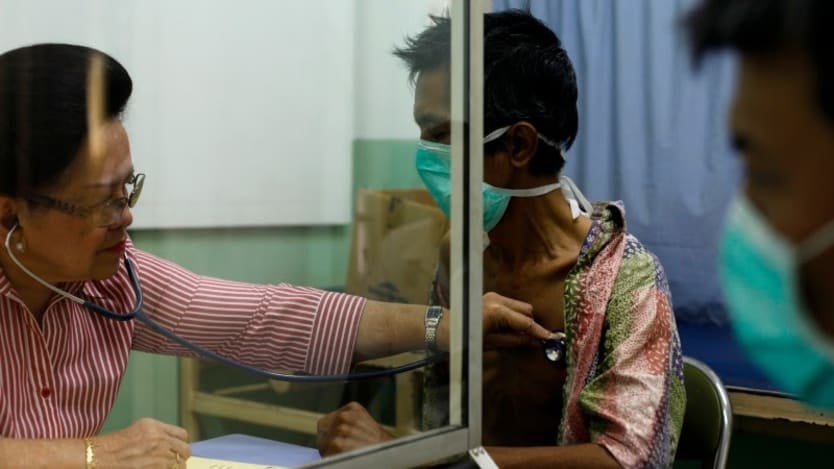
MANILA — Last month, global deaths from the coronavirus pandemic reached over 1 million. Disruptions caused by the pandemic could also lead to more deaths from other diseases, such as tuberculosis.
An estimated 1.8 million people could die from tuberculosis in 2020 — numbers last seen in 2012, according to the World Health Organization’s latest global TB report.
The numbers were based on WHO’s modeling in which it estimated an additional 200,000 to 400,000 TB deaths in 2020 if the number of people with TB detected and treated falls by 25% to 50% over a three-month period. An estimated 1.4 million people died from TB-related illnesses in 2019.
Declines in TB notifications were found in 14 high burden countries between January and June 2020, but it varies between countries.
In India, drops in TB notifications were observed during the country’s lockdown period between March and April, while in Indonesia the decline was sharpest between March and May. Indonesia reported its first confirmed cases of COVID-19 in March. The Philippines also showed a drop in people detected with TB since January, but this has started to pick up in April. In South Africa, TB diagnoses have seen a downward trend from March to June.
How big is the SDG backslide? Gates Foundation presents new data
In its first three Goalkeepers reports, the Bill & Melinda Gates Foundation outlined steady progress on the SDGs, from reductions in malnutrition to improvements in literacy. The 2020 edition illustrates how COVID-19 has both stalled and reversed progress.
These four countries account for 44% of global TB cases. In India, Indonesia, and the Philippines, overall reductions in the number of people diagnosed with TB were in the range of 25% to 30% when compared with the same period in 2019.
Potential reasons for the decline include people’s avoidance of health facilities, reductions in the number of health facilities offering TB diagnostic and treatment services, disruptions in the procurement and transportation of medicines and other laboratory items, movement restrictions, and loss of income. In some cases, there were concerns of TB patients being suspected of having COVID-19, given some similarities in symptoms between the two diseases such as fever and cough, and delays in data recording and reporting.
In April, Devex reported a significant drop in reported TB cases during the first quarter of the year in Metro Manila, the Philippines’ national capital region, as also likely due to manpower shortages and overburdened staff unable to properly file case reports.
COVID-19 could lead to an increase in the number of people developing TB by more than 1 million per year from 2020 to 2025.
“Although physical distancing policies may help to reduce TB transmission, this effect could be offset by longer durations of infectiousness, increased household exposure to TB infection, worsening treatment outcomes, and higher levels of poverty,” according to the report.
In May, a study commissioned by Stop TB Partnership estimated that three-month-lockdown conditions and delays in the resumption of TB services could lead to 6.3 million new cases from 2020 to 2025.
The situation threatens to reverse progress made against TB over the years and places the world further from reaching the global targets set in the Sustainable Development Goals, and those that heads of states and government representatives committed to at the United Nations General Assembly High-Level Meeting on Tuberculosis in 2018.
Only 14.1 million people were treated for TB in 2018 and 2019 — out of the 40 million target. Only 6.3 million people were started on TB preventive treatment, against the target of 30 million people by 2022. There was a 14% reduction in TB deaths between 2015 and 2019, but this is still far from the target of 35% between 2015 and 2020.
A report coming out next week at the 51st Union World Conference on Lung Health estimates the economic and human cost of not ending TB by 2030 will amount to some $3 trillion, said José Luis Castro, executive director of The International Union Against Tuberculosis and Lung Disease.
“The WHO report’s cautionary tone demonstrates that our collective failure to invest in the health of our citizens and defeat preventable, treatable, and curable diseases such as TB, has by default also left us so terribly exposed to COVID-19,” he said.
Update, Oct. 15, 2020: This article has been updated to clarify that this will be the 51st Union World Conference on Lung Health.








